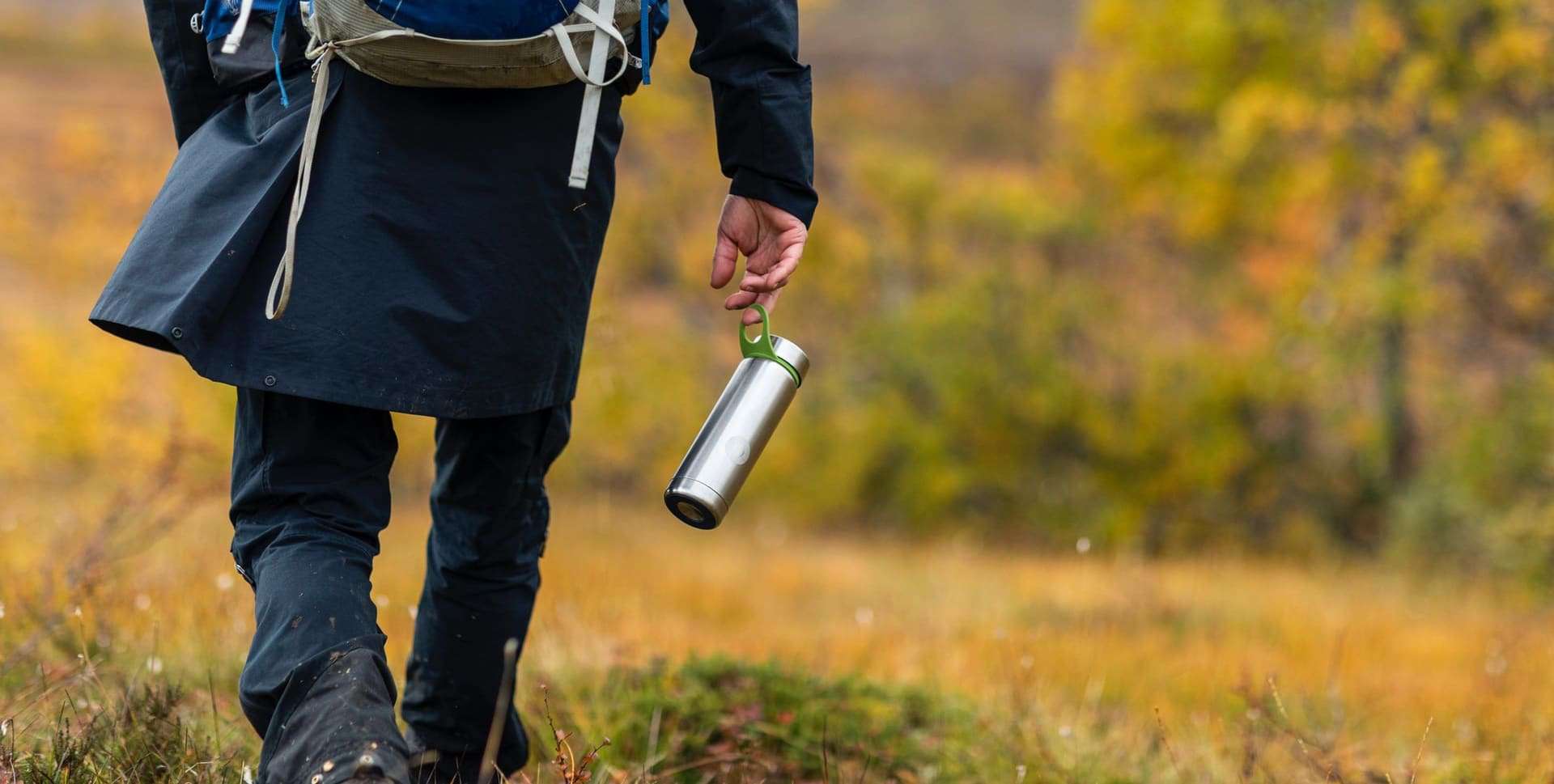You’re off on one of your first serious backpacking trips, and you’ve got all the gear, looked at the maps, and have it all planned out, but you’re not sure how much water to bring backpacking.
I’ve helped out on many rescues in my time. Fellow hikers and backpackers have got lost or stuck, resulting in sending out search parties to locate them.
What’s the first thing asked for by these unfortunate hikers? You guessed it – water!
Dehydration can turn a hike into a disaster. Read this guide to find out exactly how much water you should carry when you go hiking or backpacking.
How much water should you bring when hiking?
You should bring 1 liter of water for every hour of hiking. If you prefer to measure distances rather than time, you could carry 1 liter of water every 6 miles/10km. This requirement is for an average hiking trip in a moderate climate and on a flat (ish) trail if you are new to hiking.
It may seem like a lot of water, but if you have a hold up for any reason, a slip, a fall, or even stop to help others in difficulty, you’ll be glad you had that extra water on hand. Over time you will come to know how much water you need to bring hiking trails in your area.
A liter an hour/6miles is an excellent place to start when heading off on a very average hiking trip on a moderate day on flattish trails. Our bodies can’t create water, so you’ll need to drink it to re-hydrate, and unless it’s available from rivers or streams, you will have to bring it with you on the trip.
How much water should you carry when backpacking?
You should bring the same amount of water for backpacking as hiking, 1 liter for every hour or 6 miles/10km if you are unsure or new to long-distance hikes. When backpacking, you will need to be able to replenish your water stores every day or carry a lot of weight in water for the trip.
You might need to take water for cooking meals with too. You will use water when you make your meals, especially if you take a lot of dehydrated food to eat. Remember to note how much water each meal needs and add it to your hiking water calculations for each day.
Related: Sorting out water takes care of one of the ten essentials. Next up – sort out shelter by checking out our guide to the best waterproof tents for camping in the rain.
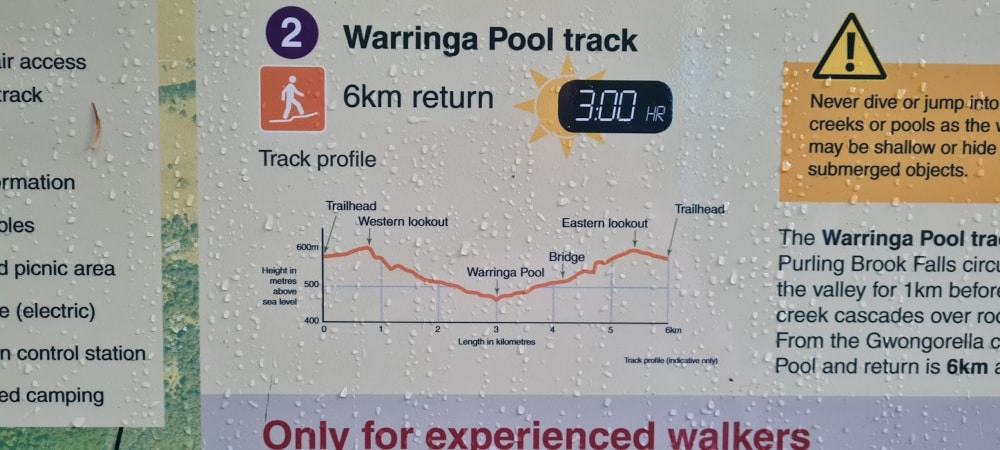
How to calculate how long it will take to walk your intended route
Planning the trip is the key to working out how much water you will need to bring backpacking. Get out the map, calculate the trail’s length, and note the ascents and descents you will be doing. A lot of hikes have this information attached to them these days.
Use the Naismith rule to calculate how long it will take you to walk your intended route. The basic rule of thumb that he suggests is to allow one hour for every 3 miles (5 km) forward, plus an additional 10 minutes for every 330 feet (100m) of ascent on the track.
If you are going downhill gently, you can take 10 minutes off the total time, but if it’s a very steep descent, add 10 minutes as you’ll have to take it easy.
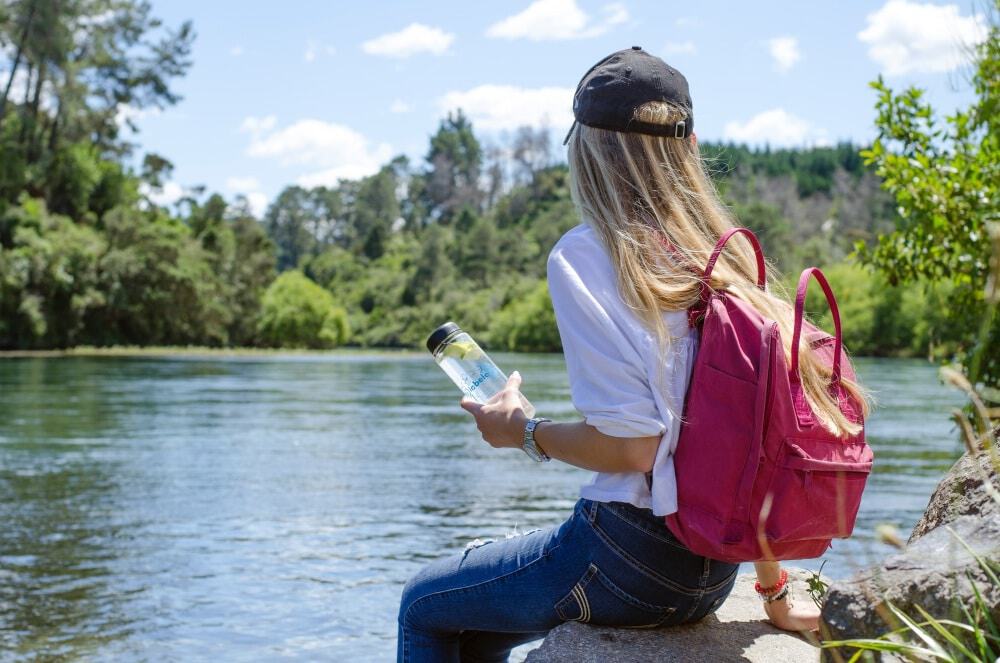
Water requirements for different hike distances and times
Once you have worked out how far you will walk and how long it will take, you can use our handy chart to work out roughly how much water you will need on a moderate day on a flat-ish trail.
The below recommendations are the minimum you should carry. Dehydration can be dangerous when you’re out hiking, so make sure to bring extra just in case.
| Hike Length (miles) | Hike Length (km) | Hike Time | Liters of water |
| 1 | 1.6 | 20 mins | 0.3 |
| 2 | 3.2 | 40 mins | 0.6 |
| 3 | 4.8 | 1 hr | 1.0 |
| 4 | 6.4 | 1h 20 mins | 1.3 |
| 5 | 8 | 1 hr 40 mins | 1.6 |
| 6 | 9.6 | 2 hrs | 2 |
| 7 | 11.2 | 2 hrs 20 mins | 2.3 |
| 8 | 12.7 | 2 hrs 40 mins | 2.6 |
| 9 | 14.4 | 3 hrs | 3 |
| 10 | 16 | 3 hrs 20 mins | 3.3 |
Adjust your water requirements for different conditions
Carry extra water for
- Hot weather
- Strenuous activity
- Intensive climbing
- Your age
- Your fitness level
- Your sweat rate
- Your body type
- Exposure to the elements – grassland, mountainsides, beach treks
Carry less water when
- Having guaranteed water sources on the route (water fountain, stream, tank, township)
- Very mild weather
- Very shaded or sheltered walks.
When you are hiking in cooler weather, you can calculate your water consumption on 1 liter per 6 miles (10km), but in hotter weather, it might be better to calculate your water consumption on 1 liter per hour.
Other factors to consider
The main thing to remember is that planning is vital. You want to carry the minimum amount you’ll need to drink without putting yourself or your group at risk. The key here is to take as much as you need and then drink it all!
Group hiking speed
A group can only hike as fast as its slowest member, and so if that’s not you, you might be spending a bit of extra time sitting in the sun waiting for them. Staying in the sun is as dehydrating as hiking in some circumstances. Make sure you have enough water for the wait.
Remember, sunburn increases dehydration
Use sunblock, sunglasses and sun smart clothes. Your body will use a lot of water to deal with any sunburn.
Extra-heavy packs require extra water
If you are doing an overnight or multi-day hike, you might be carrying an extra heavy backpack. You’ll burn more energy, and you’ll need more hydration – add additional water to your allocation.
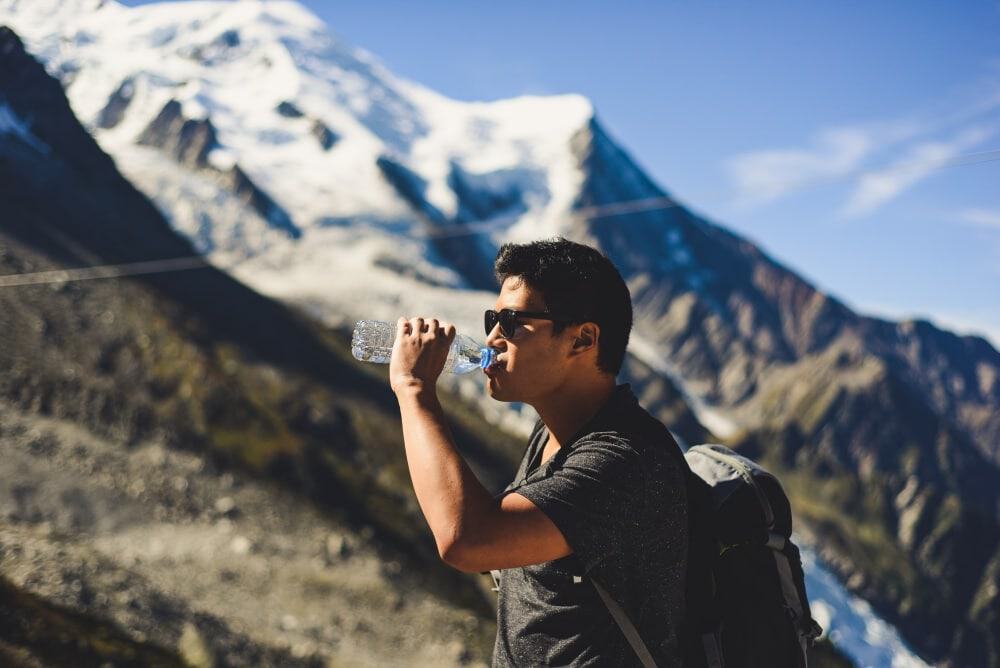
How to stay hydrated on a hike
Hydrate before you leave
A great tip for beginners, have a big drink before you head out. 500ml over an hour before you leave should do the trick for most 2-3 hours hikes. It will save you from carrying water for the first part of the trip as you already have it on board.
Keep your water bottle handy
Don’t pack your water in the bottom of your bag. Ideally, you should be able to access and drink it while you are walking.
Sip a little water frequently rather than drink a lot infrequently
Sipping as you go allows your body to process small amounts of water constantly. If you suddenly stop and chug back a liter of water, you could throw off your digestive system, and it won’t process it as efficiently. You could also feel a bit yuck too for a while afterward.
Remember to drink in cold weather too
Just because you aren’t sweating as you do in the heat, it doesn’t mean your body doesn’t need the water.
Drink more the higher you climb
Your body needs more water the higher the altitude, and it takes a lot of energy to walk uphill!
Drink up at each water source
If you have planned to stop at streams, campsites, townships, or lakes, then drink up while you are there. Fill up your bottle before you move on too.
Fill up at every available water source
Even if you have only drunk a small amount, refill your bottle anyway. You will be grateful for every drop if everything goes pear-shaped later.
Have a drink at the end of the day when you have finished hiking
Drink up again when you arrive back to camp or your car to top up what your body has used in the last part of the hike. Sometimes you are so pleased (or simply too tired) to think of having a drink, but it’s one of the best times to rehydrate.
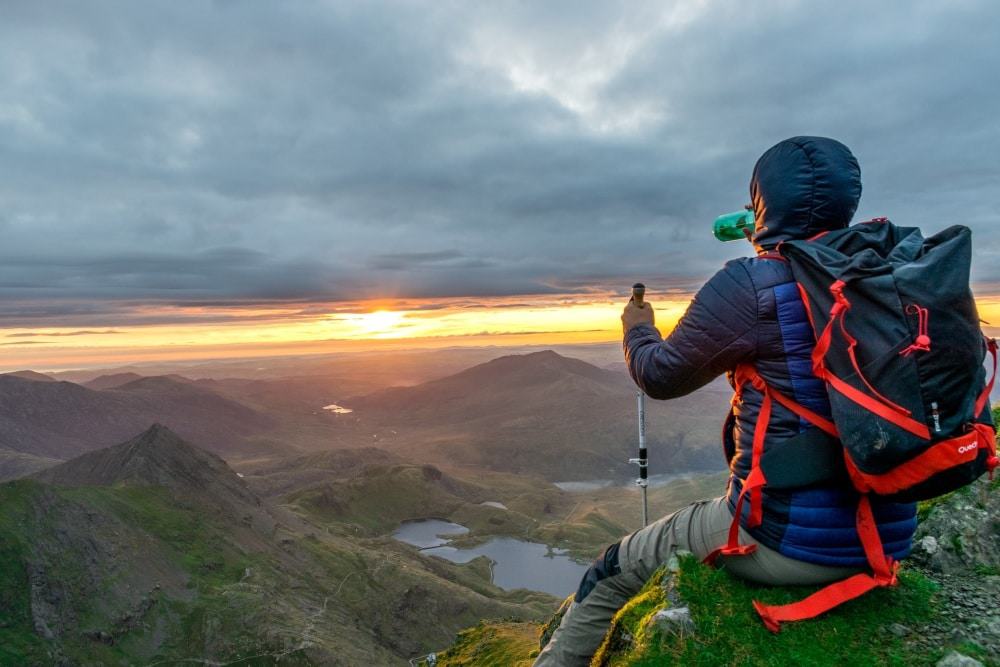
What does dehydration look like?
Humans are about 60% water, and when that level drops too far, we start suffering from dehydration, and our performance can drop. Low hydration levels can be a big deal for professional athletes, but this can be a matter of life or death when you are out hiking beyond cell phone reception.
Dehydration is pretty easy to spot.
You’ll feel thirsty, have a dry mouth, and probably have a decrease in your energy. It’s easily fixed with a decent drink of water.
More serious signs of dehydration
More severe signs are cramps, headaches, and the “umbles” (stumbling, grumbling, fumbling, and mumbling), disorientation, diminished urine output, and symptoms of shock.
If you or someone in your group start suffering from these signs, lie down in the shade and start sipping water. If there’s no sign of improvement in half an hour or so, it’s probably time to call the paramedics.
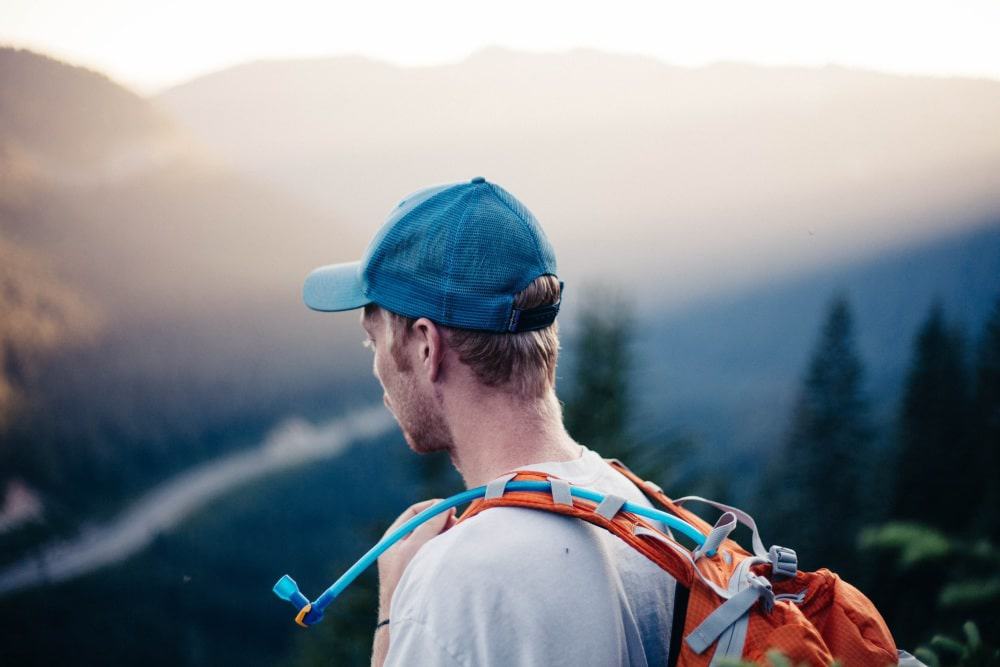
Water Bottle, hydration reservoirs, or bladders?
There is a wide range of containers to carry water in when hiking, ranging from simple hard-sided bottles that we are all familiar with to soft, easy-to-pack collapsible water bottles to hydration reservoirs and bladders. Both bottles are designed for a specific type of hiking.
Bottles are great for day trips
Bottles come in two kinds. Hard-sided and soft collapsible bottles – the latter are lighter and take up less room. Both types are great for shorter trips or hikes with guaranteed water sources on them. If you know you can refill your bottle while on a long walk, just take the bottle.
When choosing a bottle, get something made of sturdy material, so if you happen to drop, it won’t break and lose all of your water supply for the day.
Use backpack systems for longer trips
If you are heading out on a long trip or don’t have water that you can rely on to drink, investigate the bladders and reservoirs.
They can either fit into a pocket in your backpack or come as a pack that holds either just water or water and some hiking gear.
Again, the length and type of hike you are going on will determine the amount of water you will need to carry with you.
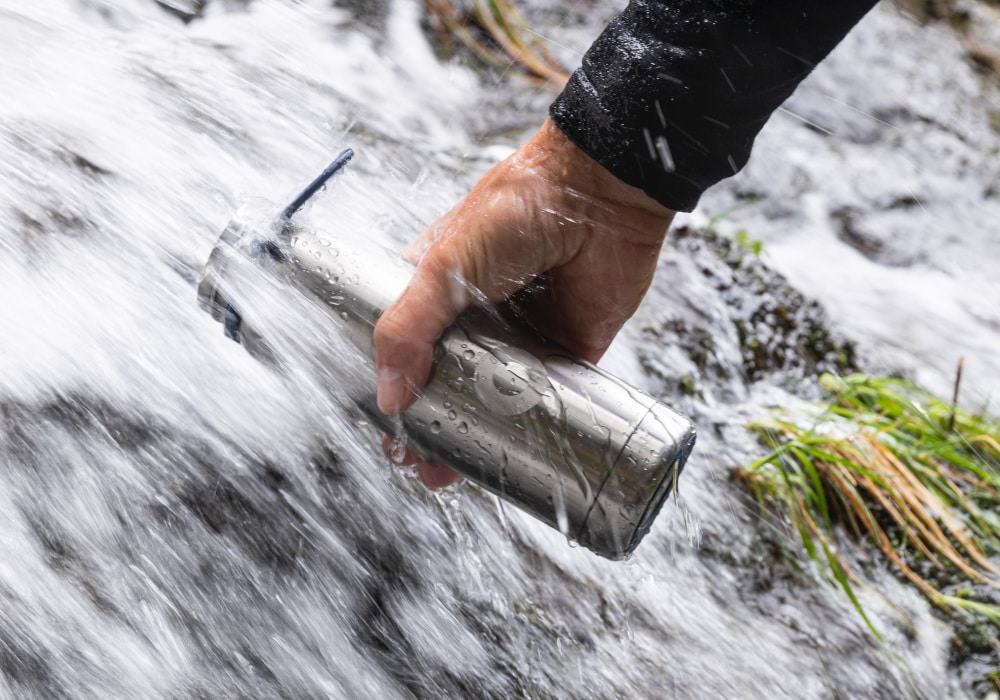
One last drop of advice
Planning is the key to knowing how much water you will need on a trip. Make sure you know how far you will be hiking, how hard it will be for you, what the weather is likely to be, and notably whether there will be the opportunity to refill your supply.
It’s always better to take a little extra if you can carry it, to be safe rather than sorry. Once you’ve got a few hikes under your belt, you’ll get to know your water needs and be able to pack accordingly.
Happy Hiking 😊
Next up: Single wall vs double wall tents – how do they compare?
Back one: Okay, so it’s been pouring and your tent is wet and packing it up risks mold growing. So how do you dry a tent fast?
